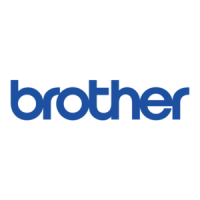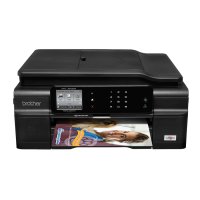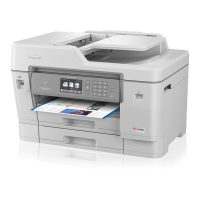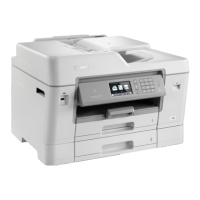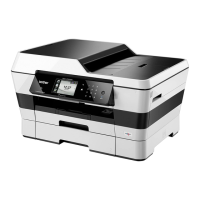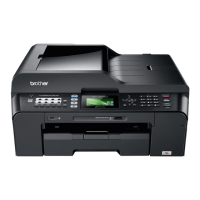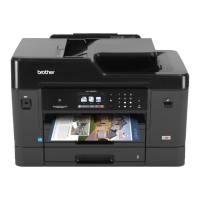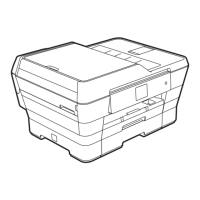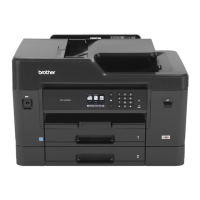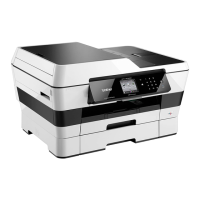Chapter 5
26
Setting up your area code (USA only) 5
When returning calls from the Caller ID
history your machine will automatically dial
“1” plus the area code for all calls. If your local
dialing plan requires that the “1” not be used
for calls within your area code enter your area
code in this setting. With the area code
setting, calls returned from the Caller ID
history to your area code will be dialed using
10 digits (area code + 7-digit number). If your
dialing plan does not follow the standard 1 +
area code + 7-digit number dialing system for
calling outside your area code, you may
experience problems returning calls
automatically from the Caller ID history. If this
is not the procedure followed by your dialing
plan, you will not be able to return calls
automatically.
a Press Menu.
b Press a or b to choose Fax.
Press OK.
c Press a or b to choose
Miscellaneous.
Press OK.
d Press a or b to choose Caller ID.
Press OK.
e Use the dial pad to enter your area code.
Press OK.
f Press Stop/Exit.
Special line considerations 5
Roll-over telephone lines 5
A roll-over telephone system is a group of two
or more separate telephone lines that pass
incoming calls to each other if they are busy.
The calls are usually passed down or “rolled
over” to the next available telephone line in a
preset order.
Your machine can work in a roll-over system
as long as it is the last number in the
sequence, so the call cannot roll away. Do not
put the machine on any of the other numbers;
when the other lines are busy and a second
fax call is received, the fax call will be sent to
a line that does not have a fax machine. Your
machine will work best on a dedicated
line.
Two-line telephone system 5
A two-line telephone system is nothing more
than two separate telephone numbers on the
same wall outlet. The two telephone numbers
can be on separate jacks (RJ11) or mixed into
one jack (RJ14). Your machine must be
plugged into an RJ11 jack. RJ11 and RJ14
jacks may be equal in size and appearance
and both may contain four wires (black, red,
green, yellow). To test the type of jack, plug in
a two-line telephone and see if it can access
both lines. If it can, you must separate the line
for your machine. (See Easy Receive in
chapter 5 in the Basic User’s Guide.)
Converting telephone wall outlets 5
There are three ways to convert to an RJ11
jack. The first two ways may require help from
the telephone company. You can change the
wall outlets from one RJ14 jack to two RJ11
jacks. Or you can have an RJ11 wall outlet
installed and slave or jump one of the
telephone numbers to it.
The third way is the easiest: Buy a triplex
adapter. You can plug a triplex adapter into
an RJ14 outlet. It separates the wires into two
separate RJ11 jacks (Line 1, Line 2) and a
third RJ14 jack (Lines 1 and 2). If your
machine is on Line 1, plug the machine into
L1 of the triplex adapter. If your machine is on
Line 2, plug it into L2 of the triple adapter.
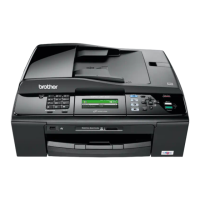
